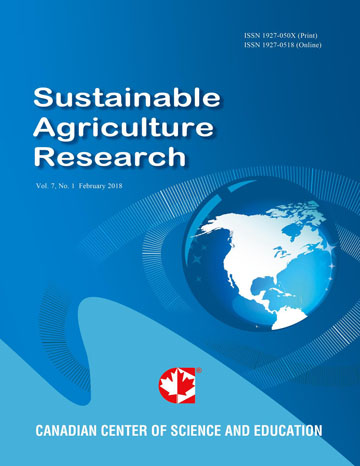Exploiting Cropping Management to Improve Agricultural Water Use Efficiency in the Drylands of Eastern Uganda
- Robert Mulebeke
- Geoffrey Kironchi
- Moses Tenywa
Abstract
A remarkable challenge lies in maximizing agricultural water productivity, particularly in the drought prone regions of sub Saharan Africa. It is hypothesized that water use efficiency (WUE) can be increased by selection of appropriate cropping management systems. This study seeks to establish the effects of cropping management on water use efficiency in cassava-sorghum cropping systems in the drylands of eastern Uganda. A randomised complete block design (RCBD) consisting of six treatments: sole cassava, sole sorghum, sole cowpea, cassava + sorghum, cassava + cowpea, and sorghum + cowpea, replicated three times were used. Two tillage practices; mouldboard ploughing (Mb) and, ripping (Rp) were used to assess the effect of tillage. WUE (kg ha-1 mm-1) was calculated as a ratio of yield (kg ha-1) to evapotranspiration (ET) (mm). ET was estimated using the soil water balance. WUE varied significantly (?= 0.05) between cropping systems with the highest observed in cassava (34.38 kg ha-1 mm-1) while the lowest was 3.76 kg ha-1 mm-1 for sorghum. WUE did not differ appreciably in both Mb and Rp tillage practices. Farmers growing sole cassava could use either of the tillage practices. The best yield was recorded in cassava + cowpea cropping system under Mb ploughing and sole sorghum under Rp gave the poorest combined yield (1,676 kg ha-1).
- Full Text:
 PDF
PDF
- DOI:10.5539/sar.v4n2p57
Index
Contact
- Joan LeeEditorial Assistant
- sar@ccsenet.org
